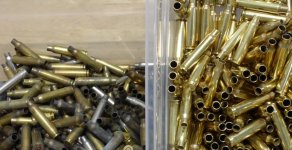kbm6893
Member
I’ve been loading handgun ammo for 7 years and have loaded and fired many thousands of rounds with no issues. I think I’m ready to dive into rifle. I’ve been saving .223 brass for years.
I like the Lee 4 die sets since I crimp separately. The one I see on Amazon is a 4 die set in a silver box. The dies are slightly different. There’s a full length sizing die, a collet neck sizing die (in place of an expanding die for pistols?), an easy adjust bullet seating die, and a factory crimp die.
I know I have to trim my brass. I use Hornady lock and load bushings would once they’re set I don’t have to touch them. I set up all my other pistol dies by following the video instructions on the Lee website.
So after properly trimming, will my method be the way to go? Is it really all that different than handgun loading? I’m just looking to punch paper. Thanks.
I like the Lee 4 die sets since I crimp separately. The one I see on Amazon is a 4 die set in a silver box. The dies are slightly different. There’s a full length sizing die, a collet neck sizing die (in place of an expanding die for pistols?), an easy adjust bullet seating die, and a factory crimp die.
I know I have to trim my brass. I use Hornady lock and load bushings would once they’re set I don’t have to touch them. I set up all my other pistol dies by following the video instructions on the Lee website.
So after properly trimming, will my method be the way to go? Is it really all that different than handgun loading? I’m just looking to punch paper. Thanks.

